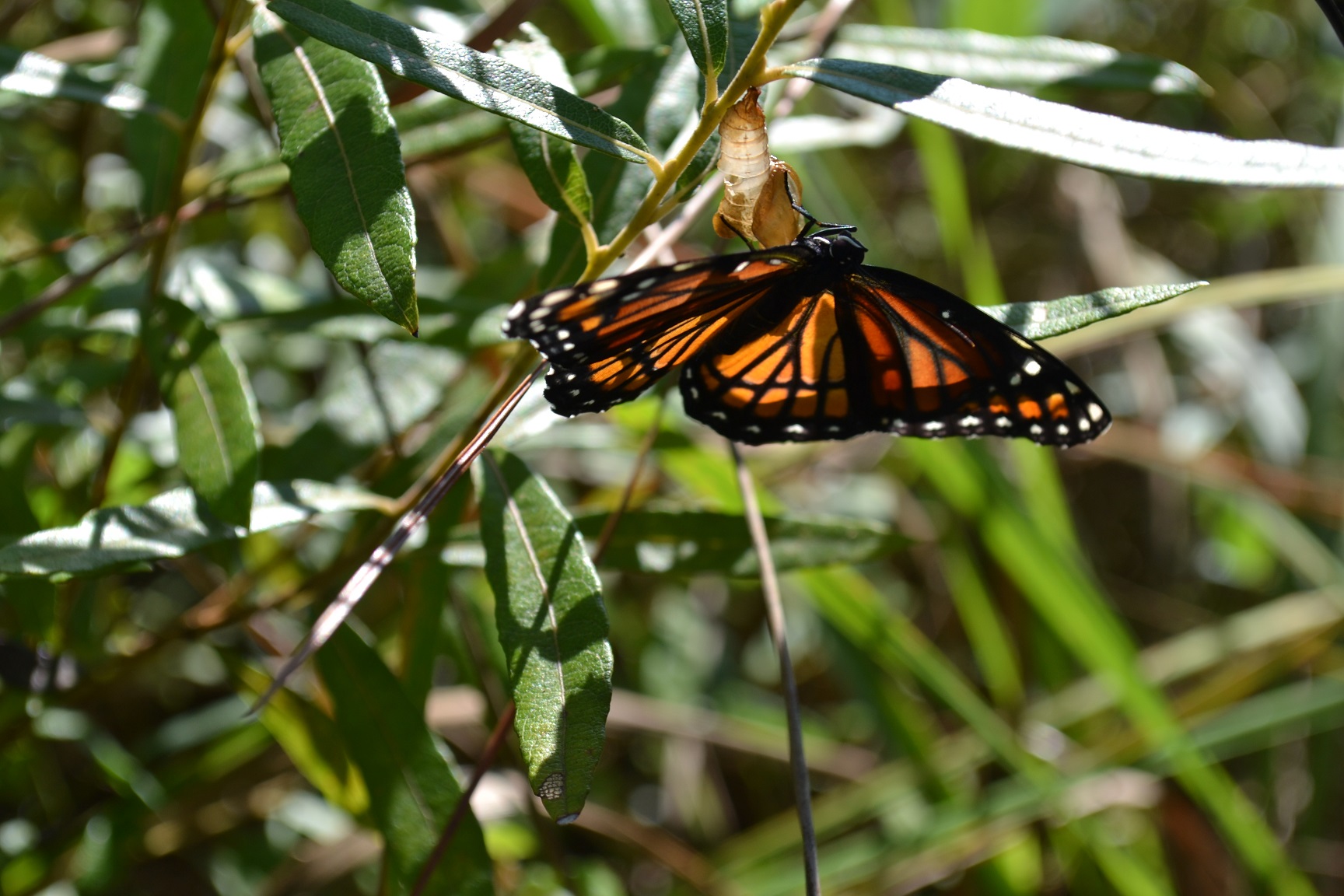Difference between revisions of "Salix humilis"
(→Conservation and Management) |
Krobertson (talk | contribs) |
||
| Line 23: | Line 23: | ||
==Description== | ==Description== | ||
<!-- Basic life history facts such as annual/perrenial, monoecious/dioecious, root morphology, seed type, etc. --> | <!-- Basic life history facts such as annual/perrenial, monoecious/dioecious, root morphology, seed type, etc. --> | ||
| − | "Catkins firms, not pendulous. Staminate flower with 2-8 stamens subtended by 1 or 2 glands. Leaves usually more than 3X as long as wide; buds with 1 scale. Capsule basically ovoid." | + | "Catkins firms, not pendulous. Staminate flower with 2-8 stamens subtended by 1 or 2 glands. Leaves usually more than 3X as long as wide; buds with 1 scale. Capsule basically ovoid." <ref name="Radford et al 1964">Radford, Albert E., Harry E. Ahles, and C. Ritchie Bell. Manual of the Vascular Flora of the Carolinas. 1964, 1968. The University of North Carolina Press. 358. Print.</ref> |
| − | "Shrub; branchlets usually cinereous. Leaves glabrous above, glaucous and usually pubescent beneath, coarsely reticulate, oblanceolate, obovate, or elliptic, 1.5-11.5 cm long, 0.6-3 cm wide, acute or obtuse, entire or undulate-crenulate, revolute, base cuneate petioles usually pubescent, 1-9 mm long. Stamens 2, filaments glabrous. Fruiting catkins 1.5-3 cm long, 15-18 mm broad, subsessile; capsules grayish, pubescent, 7-9 mm long, pedicels 1-2 mm long." | + | "Shrub; branchlets usually cinereous. Leaves glabrous above, glaucous and usually pubescent beneath, coarsely reticulate, oblanceolate, obovate, or elliptic, 1.5-11.5 cm long, 0.6-3 cm wide, acute or obtuse, entire or undulate-crenulate, revolute, base cuneate petioles usually pubescent, 1-9 mm long. Stamens 2, filaments glabrous. Fruiting catkins 1.5-3 cm long, 15-18 mm broad, subsessile; capsules grayish, pubescent, 7-9 mm long, pedicels 1-2 mm long." <ref name="Radford et al 1964"/> |
==Distribution== | ==Distribution== | ||
| Line 45: | Line 45: | ||
</gallery> | </gallery> | ||
==References and notes== | ==References and notes== | ||
| − | |||
Revision as of 17:51, 8 August 2016
Common name: Prairie Willow
| Salix humilis | |
|---|---|

| |
| Salix humilis with Viceroy butterfly just enclosed from chrysalis. Wade Tract, GA. Photo by Kevin Robertson | |
| Scientific classification | |
| Kingdom: | Plantae |
| Division: | Magnoliophyta - Flowering plants |
| Class: | Magnoliopsida - Dicotyledons |
| Order: | Salicales |
| Family: | Salicaceae |
| Genus: | Salix |
| Species: | S. humilis |
| Binomial name | |
| Salix humilis Marshall | |

| |
| Natural range of Salix humilis from the Ladybird Johnson Wildflower Database. | |
Contents
Taxonomic notes
Synonyms: Salix humilis var. humilis; S. humilis var. hyporhysa Fernald
Description
"Catkins firms, not pendulous. Staminate flower with 2-8 stamens subtended by 1 or 2 glands. Leaves usually more than 3X as long as wide; buds with 1 scale. Capsule basically ovoid." [1]
"Shrub; branchlets usually cinereous. Leaves glabrous above, glaucous and usually pubescent beneath, coarsely reticulate, oblanceolate, obovate, or elliptic, 1.5-11.5 cm long, 0.6-3 cm wide, acute or obtuse, entire or undulate-crenulate, revolute, base cuneate petioles usually pubescent, 1-9 mm long. Stamens 2, filaments glabrous. Fruiting catkins 1.5-3 cm long, 15-18 mm broad, subsessile; capsules grayish, pubescent, 7-9 mm long, pedicels 1-2 mm long." [1]